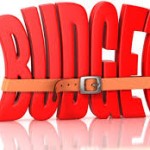
As a local tax accountant in Burwood, I am loking forward to outining the important features of the Federal Budget. If you would like to discuss this or any other matter, please do not hesitate to contact us.
Below is a summary of the key features and how they could affect you
Medicare levy low income thresholds
For 2013/14, the Medicare Levy low income thresholds will be as follows:
• Individuals $20,542 (no increase from 2012/13)
• Families $34,367 (previously $33,693)
The families income threshold (i.e., $34,367) will be increased by $3,156 (previously $3,094) for each
dependent child or student.
More ‘Tax’ for Higher Earners
From 1 July 2014, the government will introduce a 3-year temporary levy (‘the Temporary Budget
Repair Levy’) on individuals with taxable incomes in excess of $180,000 per annum (and, therefore
paying tax at the top marginal rate – currently, 47%, including the Medicare Levy), until 30 June 2017.
From 1 July 2014 until 30 June 2017, the Temporary Budget Repair Levy will apply at a rate of 2% on
an individual’s taxable income in excess of $180,000 per annum.
This means that:
• individuals with a taxable income of $180,000 or below will not pay the levy;
• individuals with a taxable income of $200,000 will pay 2% of $20,000, or $400 of levy; and
• individuals with a taxable income of $300,000 will pay 2% of $120,000, or $2,400 of levy.
Also a number of other tax rates that are currently based on calculations that include the top marginal tax rate will also be increased in line with the Temporary Budget Repair Levy from 1 July 2014. An exception applies for fringe benefits tax (FBT), which will be increased from 47 per cent to 49 per cent from 1 April 2015 until 31 March 2017 to align with the FBT income year.
Short Term Clarity on Super
Tuesday’s budget confirmed the rise of the superannuation guarantee to 9.5% as of 1 July 2014 this is in-line with 2012 legislation. However the proposed schedule has changed to hold the rate 9.5% for 4 years followed by 0.5% yearly rises up to 12% by 2022-23.
Tighter Welfare Rules
The government has proposed several clamp downs on welfare including:
• Reduced deeming thresholds from 2017 making it harder to pass the ‘income test’ for social security benefits
• Commonwealth Seniors Health Card changes
• Progressively increase the Age Pension age to 70 from 2025
Family Assistance
Changes to the Family Tax Benefits (FTB) scheme include a change to Part B where the primary income limit will be reduced from $150,000 to $100,000 from 1 July 2015. Also Payment of FTB Part B will be limited to families whose youngest child is under age six from 1 July 2015. Transitional arrangements will ensure families whose youngest child is age six and over on 30 June 2015 will remain eligible for FTB Part B for two years.
The paid parental leave scheme has been proposed on a smaller scale to what was expected. It will provide six months of paid leave, including superannuation, from 1 July 2015. However, the payment threshold is proposed to be reduced from $150,000 per annum to $100,000 per annum.
Business & Investors
The company tax rate has been reduced by 1.5% bringing it down to 28.5%. This reduction, however, will be off-set by businesses that earn more than $5,000,000 in taxable income by a 1.5% levy to fund the paid parental leave scheme.
